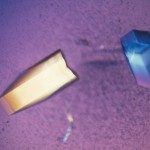Link to Pubmed [PMID] – 31765054
Link to DOI – 10.1002/chem.201904844
Chemistry 2020 Jan; 26(4): 948-958
We describe here an extensive structure-bioluminescence relationship study of a chemical library of analogues of coelenterazine, using nanoKAZ/NanoLuc, a mutated luciferase originated from the catalytic subunit of the deep-sea shrimp Oplophorus gracilirostris. Out of the 135 O-acetylated precursors that were prepared by using our recently reported synthesis and following their hydrolysis to give solutions of the corresponding luciferins, notable bioluminescence improvements were achieved in comparison with furimazine, which is currently amongst the best substrates of nanoKAZ/NanoLuc. For instance, the rather more lipophilic analogue 8-(2,3-difluorobenzyl)-2-((5-methylfuran-2-yl)methyl)-6-phenylimidazo[1,2-a]pyrazin-3(7H)-one provided a 1.5-fold improvement of the total light output over a 2 h period, a close to threefold increase of the initial signal intensity and a signal-to-background ratio five times greater than furimazine. The kinetic parameters for the enzymatic reaction were obtained for a selection of luciferin analogues and provided unexpected insights into the luciferase activity. Most prominently, along with a general substrate-dependent and irreversible inactivation of this enzyme, in the case of the optimized luciferin mentioned above, the consumption of 2664 molecules was found to be required for the detection of a single Relative Light Unit (RLU; a luminometer-dependent fraction of a photon).




